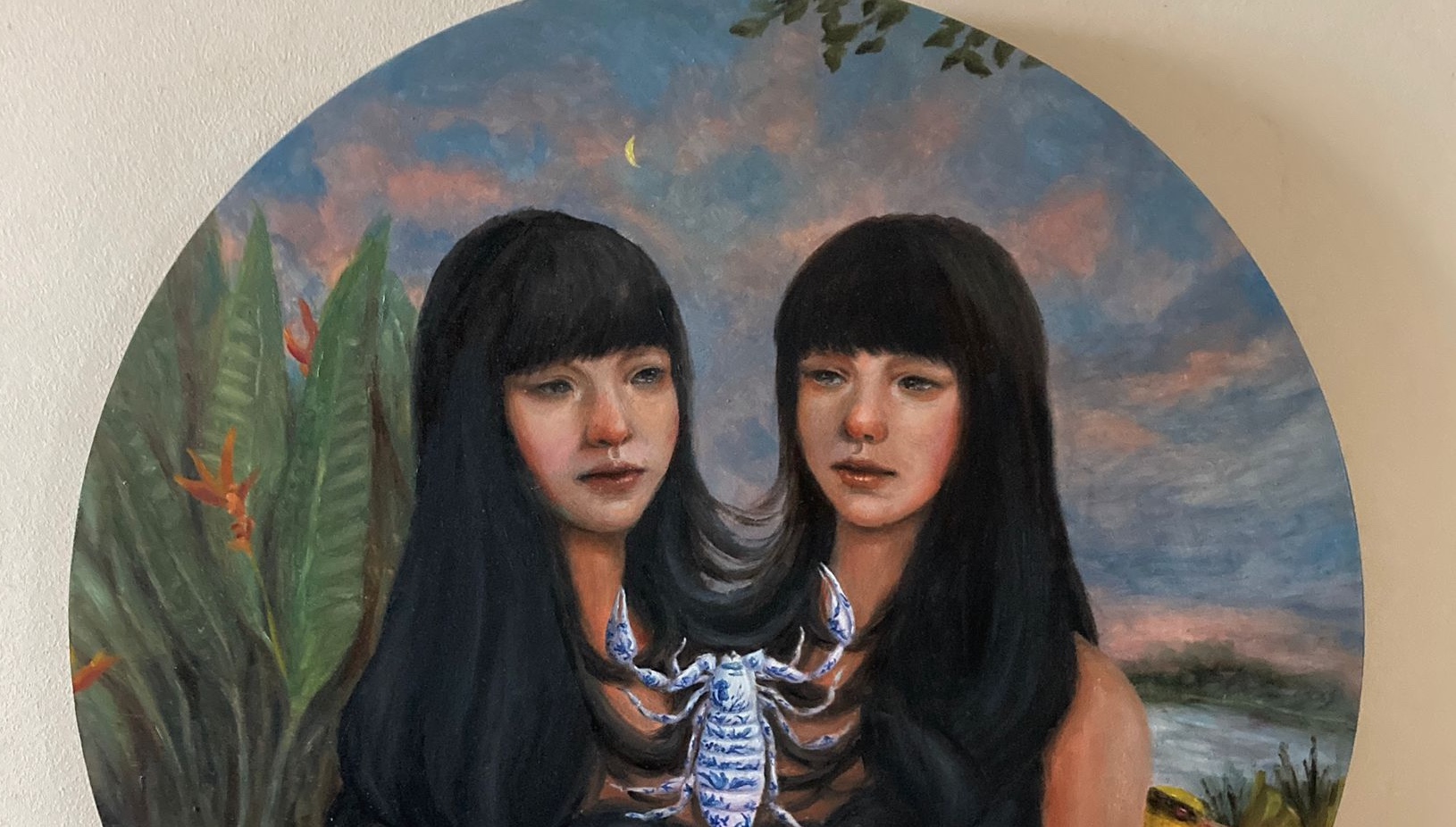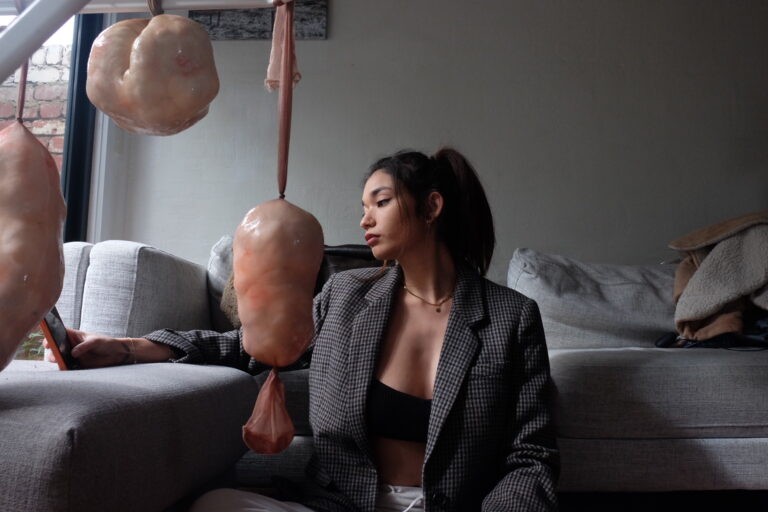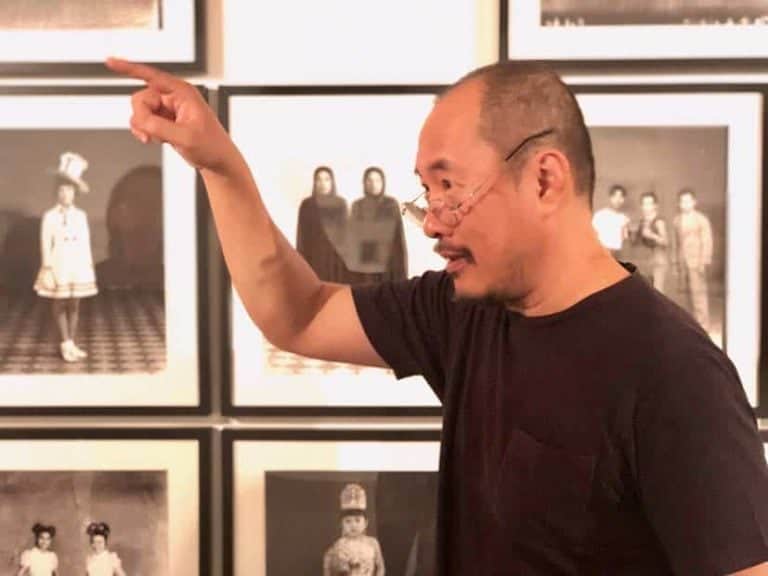To me — and I’ll call it like it is– Christine R. Bay’s paintings read like little excerpts from fairy tales written by gnomes who were high on shrooms.
Except that there are no gnomes at play here; it is simply Christine herself, an ex-programmer in digital advertising, turned full-time artist. For the first few years of her practice, she balanced her day job with painting at night, channelling all her pent-up creative impulses onto her canvases. Scrolling through her portfolio, it is clear that Christine is never short on wild imagination, the kind that makes you wonder what she’s been consuming intellectually.
The self-professed pop surrealist paints mainly portraits and her figurative paintings are delicate, with the intimacy of a dream diary.
In her portraits, you find a girl cradling a bee the size of a baby, a face appearing at the heart of a bisected onion, adolescent faces peeping out beneath the beaks of birds, and many more enigmatic amalgamations.
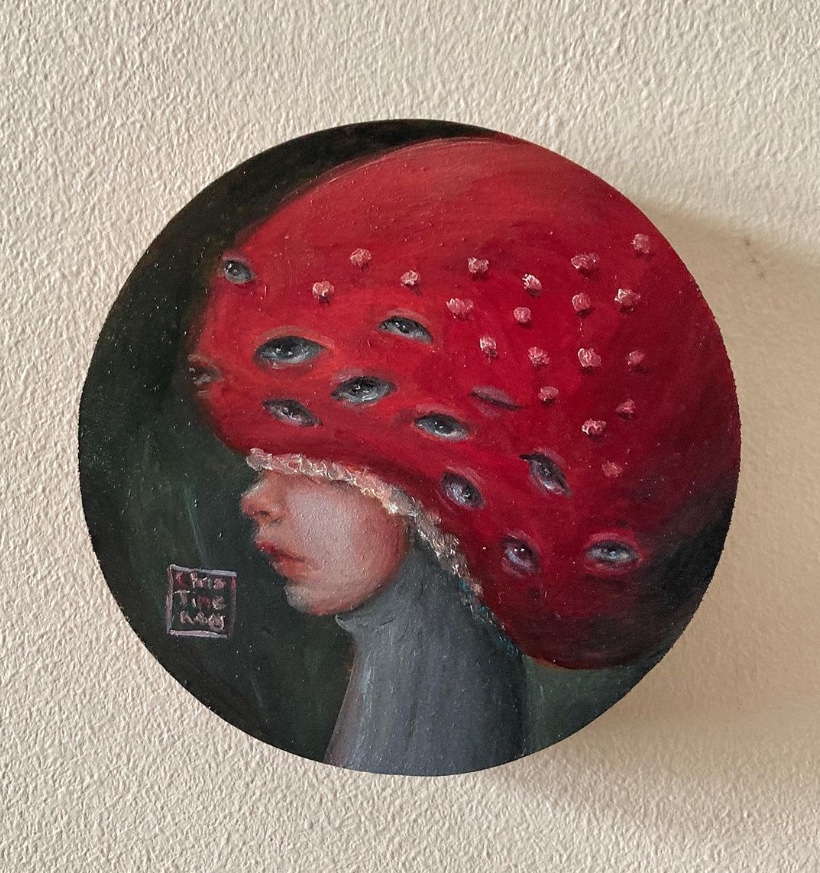
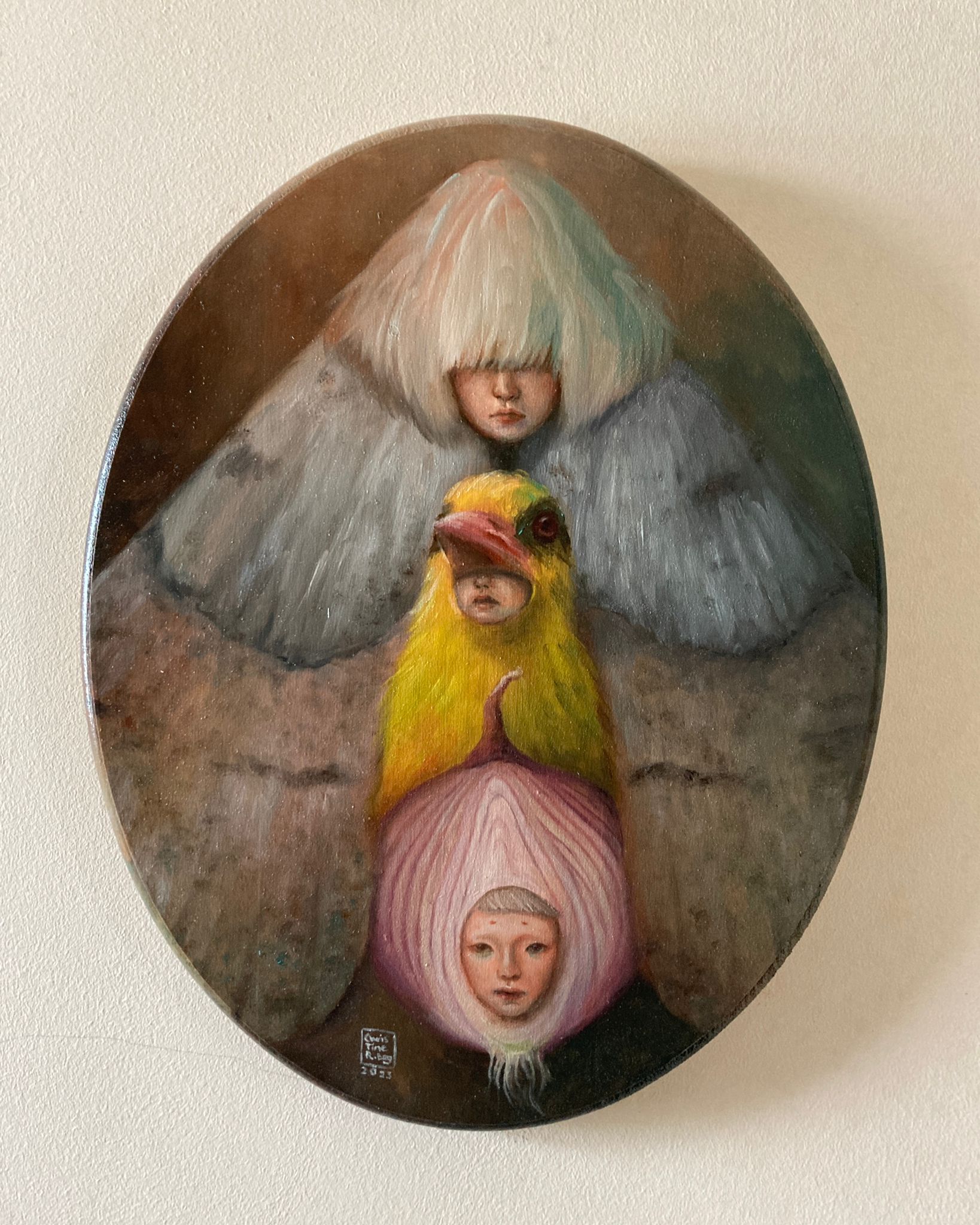
Recurring motifs serve as an anchor to the otherwise bizarre choice of subjects, forming a set of visual vocabularies unique to the artist. Moths, black-naped orioles, long tresses and heavy bangs– these are phrases that hardly belong in the same sentence. But together, in Christine’s paintings, they speak to a journey of self-discovery and healing.
A quick glance across Christine’s portraits reveals that the vast majority of the works feature feminine-looking subjects and children. In fact, a number of the works are self-portraits, addressing mental health with an autobiographical slant.
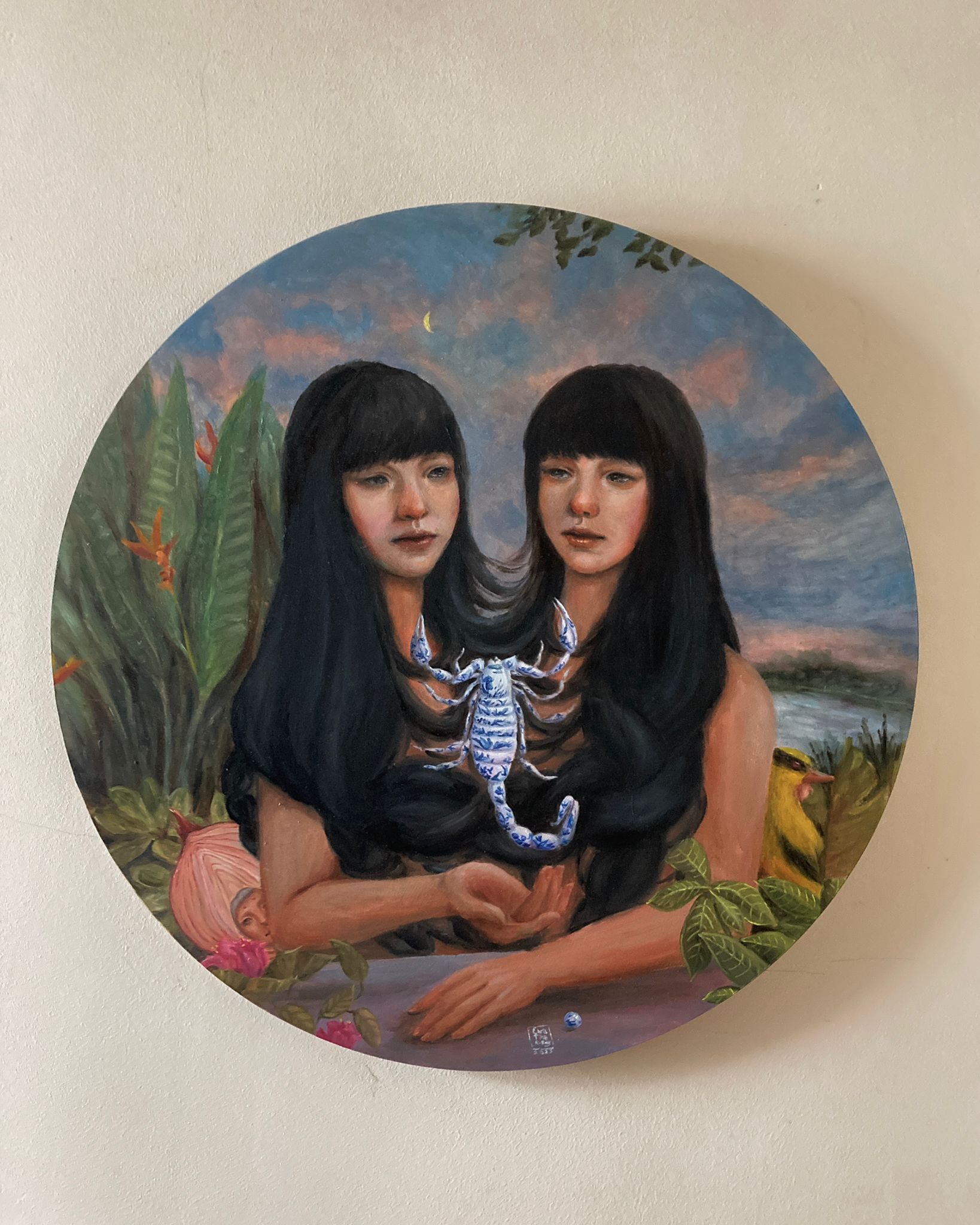
Often, additions to the already-saturated market of artistic introspection draw out weary sighs of frustration in viewers– we should all know by now how critical mental health is and how ill-equipped our society is at handling it, should we not?
But artists don’t make policies or give therapy. In the face of a national crisis, art was not even considered to be ‘essential’. Sometimes, one wonders what constructive things art can add to the equation, aside from creating collective angst? From beneath glossy coats of colour, Christine’s creatures whisper a faint but consistent offering: beauty.
Now, this is not to say that Christine glosses over the topic of mental health with pretty things. On the contrary, she goes right into the unpleasant details. She goes into every nook and cranny of her emotional sensations: her reconciliation with her impaired vision, the looming proximity of death, her existential angst, and ironically, her own inclinations towards avoidance.
In her portraits, heads float in the air, surrounded by foliage, embedded in the bellies of animals, and sit atop the wings of butterflies. Many subjects have their eyes covered; and those that do have uncovered eyes cast their languid gazes into nothingness.
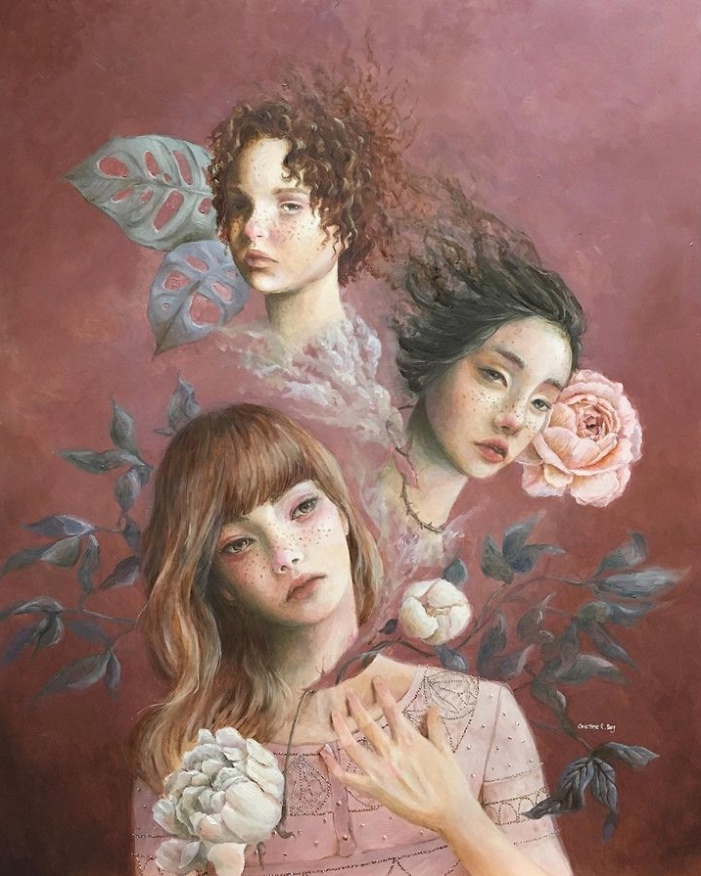
All these admittedly sound pretty bleak. But Christine’s paintings are fully coloured, with a palette influenced by the brilliant hues of the Pre-Raphaelites. Strange and wonderful creatures fill the space; they are very much alive and thriving. Somewhere between the internal turmoil and blank canvases, Christine seeks out the potential for beauty in each and every one of her complicated feelings.
To be frank, after years of experiencing a left-leaning radical fine art education I personally felt some tight-lipped uneasiness when confronted with, well, paintings that are simply nice to look at. But to take a step further, works like Christine’s represent a hopeful transformation of energy from something troubled, into something serene.
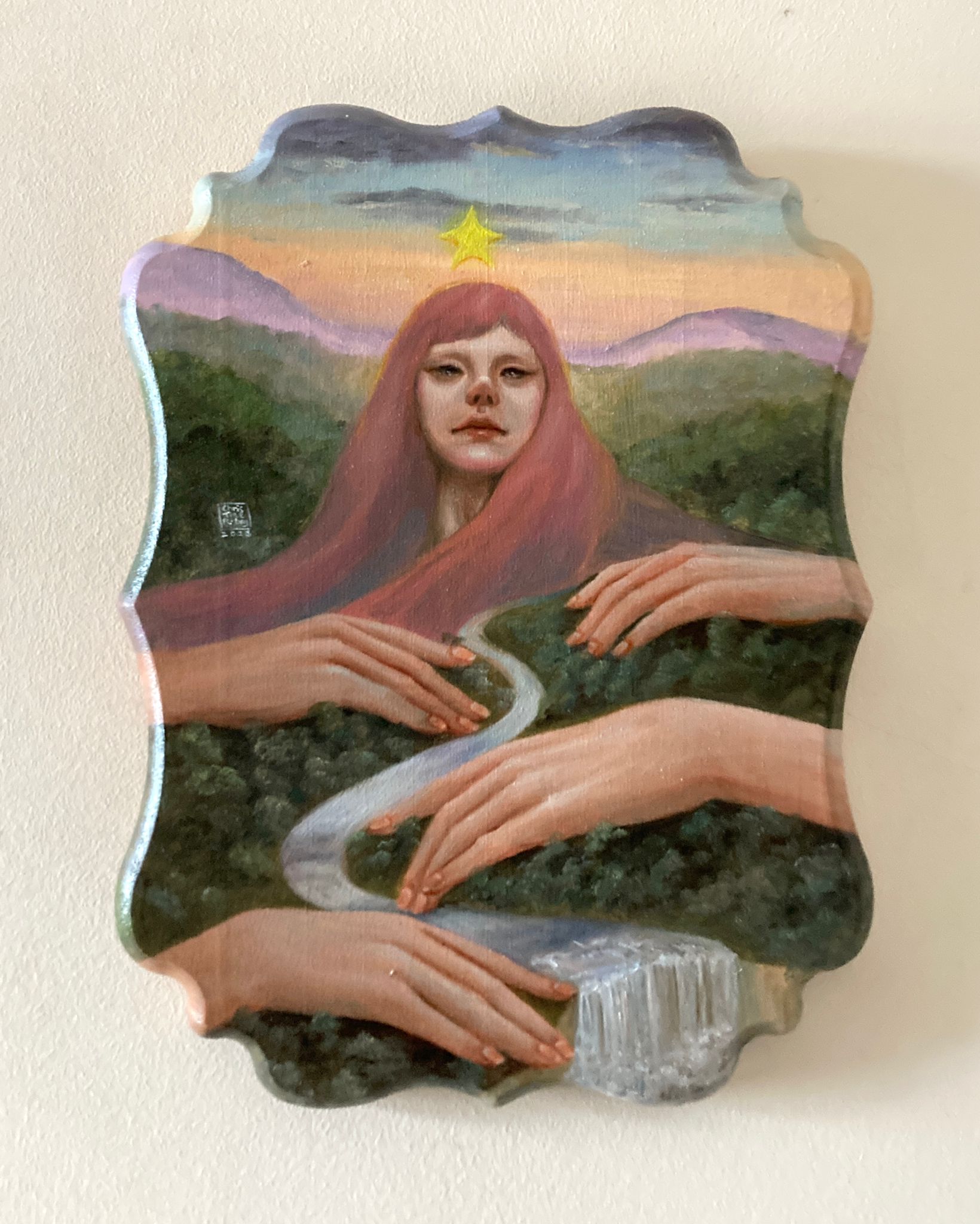
Synchronicity for example, is a work that radiates tenderness. Amid dense mounds of vegetation, a twisting river leads to a steep drop. The imagery of water has a consistent meaning across all of Christine’s works. It represents the inescapable depths of mental gloom and all that comes with it. Meandering rushes of currents followed by crashing waterfalls symbolise her mental state at its worst. Yet, at every bend of the river, a hand softly reaches out. It holds the audience’s gaze and passes it back—back from that crashing waterfall, back upstream, back to an oracle-esque figure, back to a guiding star in the sky.
These hands, Christine explains, symbolise synchronistic events or meaningful coincidences that helped her through the worst of times.
Tropical dreamscapes also feature strongly in Christine’s work.
Perhaps we don’t think enough about the fact that we are surrounded by non-human creatures. Creatures whose movements are seemingly unrestrained by the spatial and temporal segregations to which we are bound. A border may separate people, but it’s meaningless to say, a fish. Christine’s timetable for example, dictated that she ought to go to work at 9 a.m., but that timeframe was irrelevant to the black-naped oriole living on the tree next to her house.
“That oriole would always call when I passed by,” she explained to me.
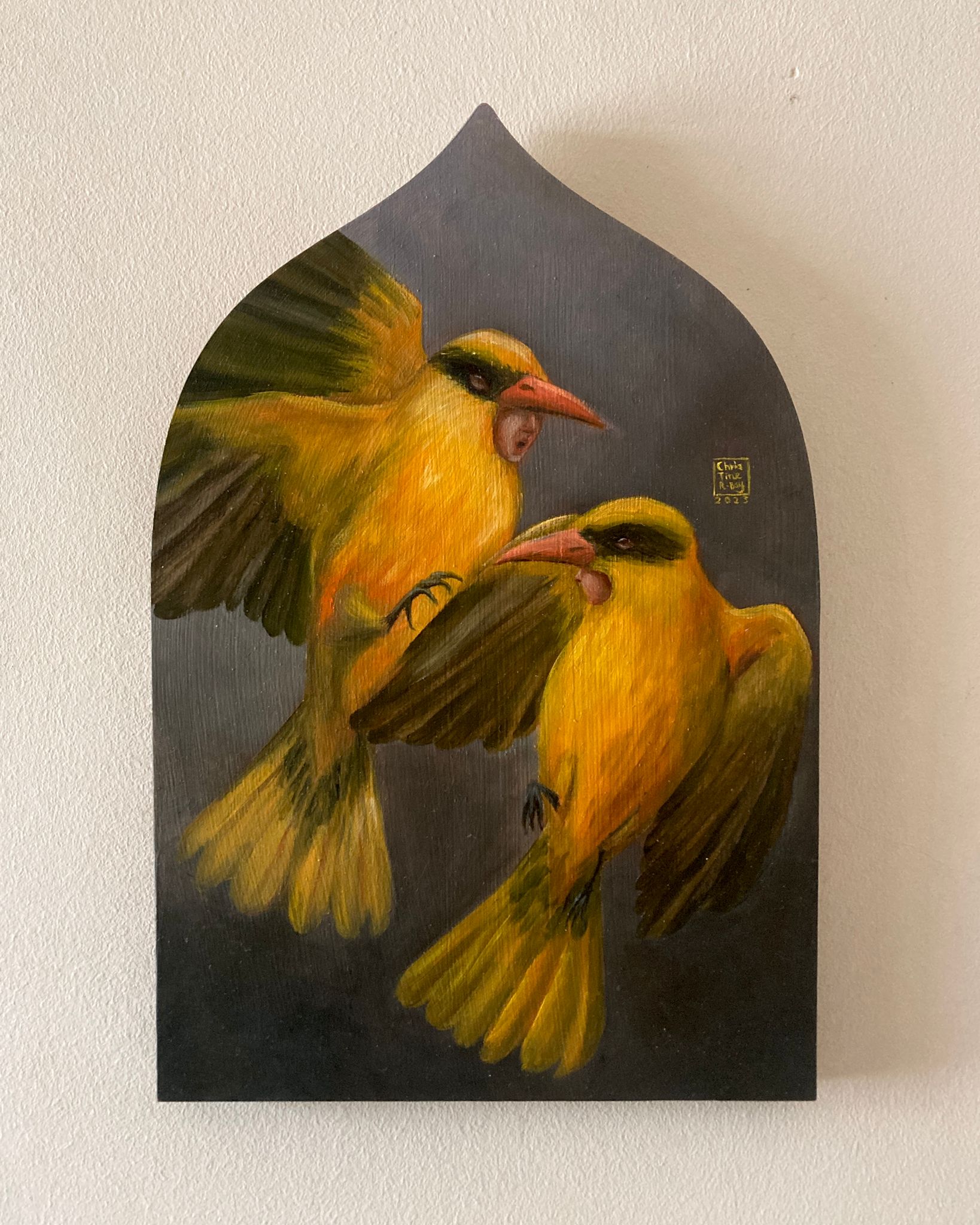
She took this as a sign of kinship. To Christine, the oriole symbolised the freedom to fly and to get out of bad places, physically and mentally.
Sunbirds, hovering and dainty, almost always appear to her in pairs. To her they symbolised friendship, while moths and butterflies signified rebirth and transformation. You’ll see that the animals in her works are synthesised creatures fused with human qualities, fantastical creations that dwell only in the realm of imagination.
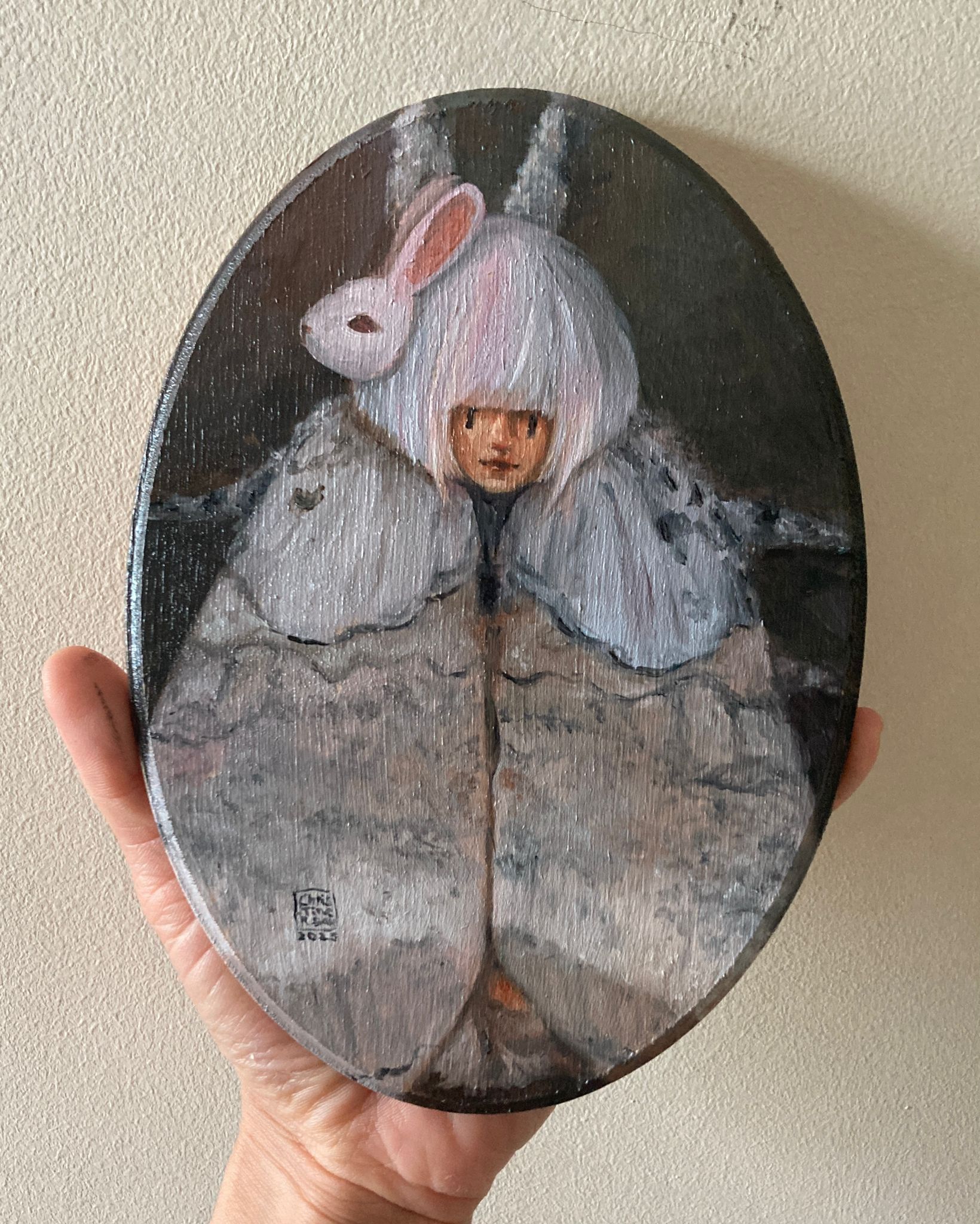
When Christine found a tussock moth at her doorstep one day, she decided to make a character out of it. She dug into the backstory of the species and found out that such moths start off in life as toxic creatures. The hairs of a tussock moth caterpillar can cause skin rashes, but these prickly features cease to exist once the insect goes through the process of metamorphosis, emerging from its pupal case as a full-grown moth. And so Christine’s own creature in The Tussock similarly embodies the process of character growth.
I can see how a work like this would speak to someone who went through a period of self-reflection to correct their harmful behaviours. In The Tussock, we see that rebirth doesn’t turn a creature into a saint. Rather, the emergent figure remains an adolescent, still capable of mistakes, still vulnerable, and still deserving of love.
As I wrapped up my interview with Christine, I asked her about the very portable sizes of her paintings, which usually range from less than fifty centimetres in width, to the size of a human thumb.
She explained that her preferred working method is to finish a piece once she gets into the rhythm of it, and that a bigger piece would mean a different working pace altogether. There is a poetic symmetry to the synchroneity of her artistic process with the intense exploration of emotions that the works embody.
These lovely art pieces sit comfortably in your palms, offering quiet glimpses into her dreams.
__________________________________________
Christine’s mini solo exhibition Onion and Moths runs at Mr Lim’s Shop of Visual Treasures from Friday, 17th November to 3 December 2023.
